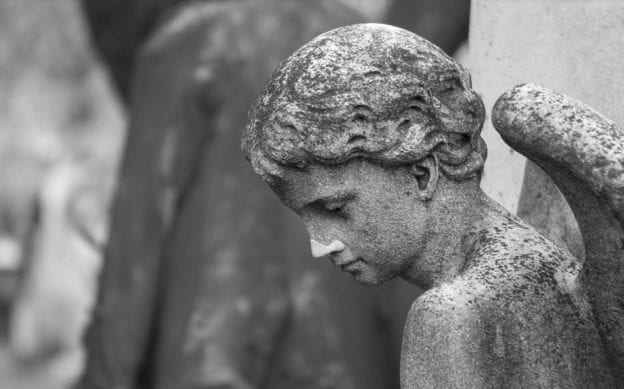When planning funerals at funeral homes in Mount Sterling Heights, MI, the funeral director will be very helpful in guiding you through the process and making the many decisions you will need to make about what will be included in the funeral service.
Most funeral services are preceded by a visitation. A visitation generally happens just before the funeral service takes place and it is an opportunity to pay respects to the deceased and to offer condolences to the grieving family. Visitations are typically two hours (after work hours) and offer enough time for people to stop by the funeral home to see the deceased and to talk with the family.
Some people will come for the visitation only and not stay for the funeral. However, many people will attend both the visitation and the funeral. Once mourners go through the visitation line, they will take a seat in the back of the funeral chapel and sit quietly until the funeral service begins. Proper funeral etiquette is to take a seat as far back as possible, and as far inside the row away from the aisle as possible. This keeps people who arrive later to the visitation, or who just come for the funeral, from having to crawl over people to find a seat.
The funeral itself usually has several parts. While these are not mandatory, they are traditional in American culture.
One of the decisions that will need to be made as you’re planning the funeral is who will oversee it. Usually, if the deceased was affiliated with a church, a clergy member from that church will oversee the funeral service. However, anyone can oversee the funeral service. This could be the funeral director, a close family friend, or even a family member.
The parts of the funeral service usually go in this order: a welcome by the person overseeing the service, readings, eulogies (if any), spiritual guidance, music, and a closing prayer,
In the welcome part of a funeral service, mourners are thanked for coming to the service and the obituary of the deceased person is read. Included in this welcome may be date, location, and time of graveside services.
During the readings part of a funeral service, passages are read that were either important to the deceased, favorites of the deceased, or that were selected by the family to describe the deceased. These might include poems, prose, or Bible scriptures. These will usually be read by family members.
If a funeral service includes eulogies, these will be given by close friends and/or immediate family members. Eulogies are special tributes that highlight the character of the deceased, the tell stories about their impact during their lifetime, and say why they will be missed.
Most funeral services include a part dedicated to spiritual guidance. This includes comfort for the family about their loved one’s death and admonitions for those who are still living.
While music may be played at intervals during a funeral service, typically a couple of selections are played after the message of spiritual guidance. The music can be anything, from favorites of the deceased, to traditional hymns or gospel music, to songs that the family chose to express their love for the person who died.
The funeral service will then close with a prayer, in most cases. After this, the funeral director will announce the date, the time, and the location of graveside services. They will also provide a time that people who want to go to the gravesite from the funeral home should be there to be part of the funeral procession.
For more information about funerals at funeral homes in Mount Sterling Heights, MI, our compassionate and experienced staff at Lee-Ellena Funeral Home can help. You can come by our funeral home at 46530 Romeo Plank Rd., Macomb, MI, 48044 or you can contact us today at (586) 412-8999.





